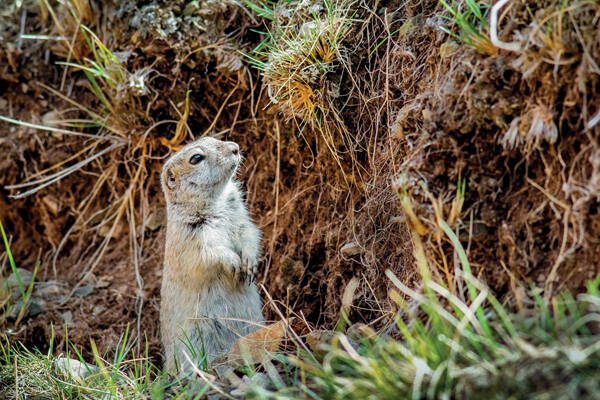Spermophilus relictus
IUCN
LCBasic Information
Scientific classification
- name:Spermophilus relictus
- Scientific Name:Spermophilus relictus,Tien Shan Ground Squirrel,Yellow rat
- Outline:Rodents
- Family:Rodentia Sciuridae Squirrel
Vital signs
- length:Approx. 250 mm
- Weight:
- lifetime:
Feature
Its body size is similar to that of the red-cheeked yellow squirrel, but its tail is longer than that of the red-cheeked yellow squirrel.
Distribution and Habitat
It is only distributed in Xinjiang in China. It is distributed outside the Tianshan Mountains abroad. It lives in grassland environments.
Appearance
Summer coat: The back of the body is grayish brown and light yellow, the back of the tail is rusty light yellow, the tail has a wider dark brown area at the distal end, and the tip is yellowish white. Winter coat: lighter and gray, often with a light yellow tint. The postorbital process is sharp and thin. The nasal bone is short. The length of the upper cheek teeth row is slightly longer than the length of the tooth gap.
Details
The Tianshan yellow squirrel is of medium size and has a long tail. It mainly inhabits the gentle slopes of the hills in front of the mountains, small basins between mountains, and relatively dry areas on both sides of the river valley in the mountain grasslands at an altitude of 1000-1500 meters. On the hillsides with exposed gravel, it mostly inhabits the loose soil areas with well-developed vegetation. The vegetation in the habitat is mainly composed of feather grass-artemisia cinerea. It can occasionally be seen near farmland, but in small numbers.
The Tianshan yellow squirrel begins to hibernate in mid-to-late March, the young mice separate in early July, and begin hibernation in late August and early September. They are active during the day, but are most active 3-4 hours after sunrise and 2-3 hours before sunset; they rest in caves during the hot noon.

The caves of Tianshan yellow squirrel are the same as those of other yellow squirrels, and are divided into living caves and temporary caves. The living caves usually have one entrance, and some have 2-3. The caves are long and curved, with nests. Temporary caves are simpler and have no nests. In summer, the living caves are scattered, mostly in valleys with diverse plants and lush greenery. In winter, the living caves are concentrated, mostly on warm, leeward, sunny slopes where the snow melts quickly in spring and plants sprout early.

The Tianshan yellow squirrel feeds on the green parts of Artemisia annua and various grass weeds. However, in areas with high locust density, locusts are the main food source, which shows that the Tianshan yellow squirrel has obvious locust-eating properties.
Tianshan yellow squirrel reaches sexual maturity in the second year after birth, after a hibernation. It produces one litter per year, with 4-8 pups per litter. In 1983, the population density in Gissar National Nature Reserve, Uzbekistan (2000-2300) was 2.8 per hectare. The population development trend of this species is unknown.








